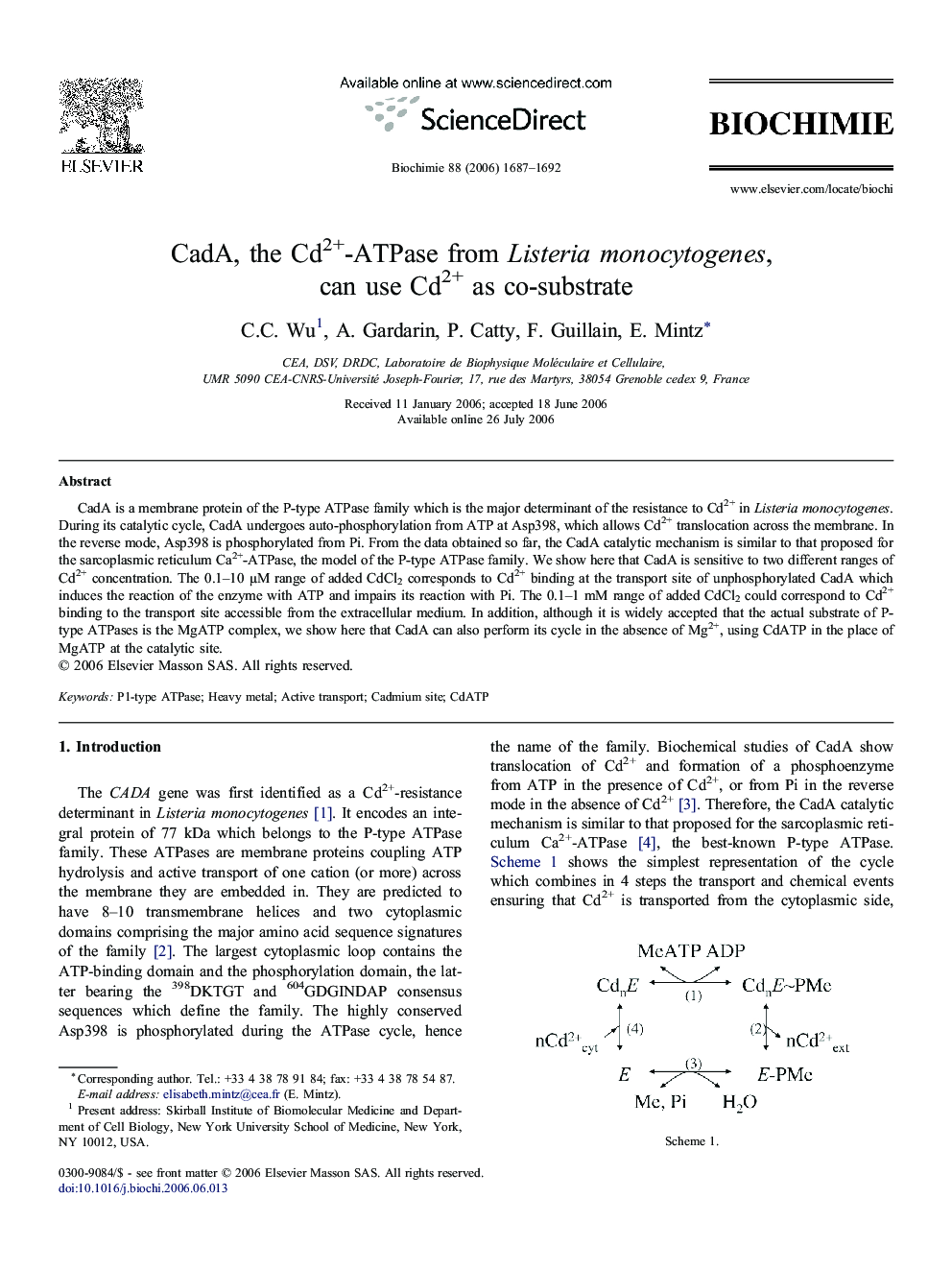| Article ID | Journal | Published Year | Pages | File Type |
|---|---|---|---|---|
| 1953445 | Biochimie | 2006 | 6 Pages |
CadA is a membrane protein of the P-type ATPase family which is the major determinant of the resistance to Cd2+ in Listeria monocytogenes. During its catalytic cycle, CadA undergoes auto-phosphorylation from ATP at Asp398, which allows Cd2+ translocation across the membrane. In the reverse mode, Asp398 is phosphorylated from Pi. From the data obtained so far, the CadA catalytic mechanism is similar to that proposed for the sarcoplasmic reticulum Ca2+-ATPase, the model of the P-type ATPase family. We show here that CadA is sensitive to two different ranges of Cd2+ concentration. The 0.1–10 μM range of added CdCl2 corresponds to Cd2+ binding at the transport site of unphosphorylated CadA which induces the reaction of the enzyme with ATP and impairs its reaction with Pi. The 0.1–1 mM range of added CdCl2 could correspond to Cd2+ binding to the transport site accessible from the extracellular medium. In addition, although it is widely accepted that the actual substrate of P-type ATPases is the MgATP complex, we show here that CadA can also perform its cycle in the absence of Mg2+, using CdATP in the place of MgATP at the catalytic site.
